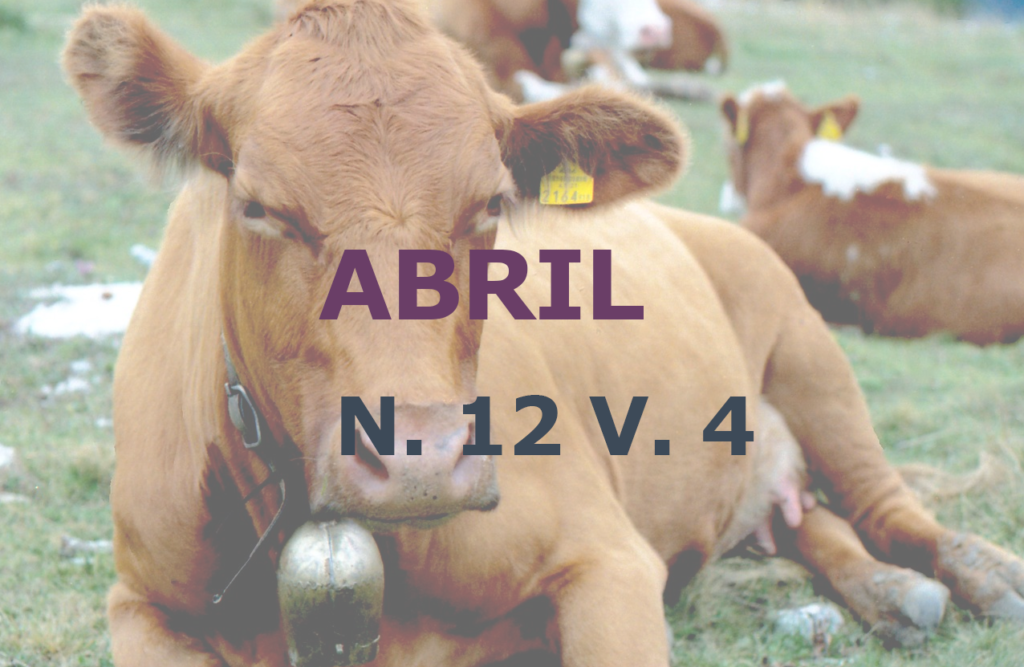Nematoides gastrintestinais na ovinocultura de corte sob regime de pastejo
DOI:
https://doi.org/10.22256/pubvet.v12n4a65.1-12Palavras-chave:
endoparasitos, Haemonchus contortus, ovinos, pastoResumo
A ovinocultura se faz atuante em praticamente todos os continentes, a ampla difusão da espécie se deve principalmente a seu poder de adaptação. Devido aos fatores geoclimáticos, os países tropicais e subtropicais se destacam e se estabelecem no cenário agropecuário, e o Brasil não se torna exceção nesse mercado. O Brasil por possuir parte considerável do rebanho produzido em pasto, que se constitui em uma das formas econômicas e práticas de produzir e oferecer volumoso aos ruminantes, é um dos principais produtores de carne a um dos menores custos de produção. Os climas tropicais e subtropicais além de favorecer condições ideais para a produção e desenvolvimento dos setores agrícolas e pecuários como, por exemplo, o cultivo de pastagens e a criação de ruminantes, também proporciona condições favoráveis para o desenvolvimento e sobrevivência dos nematoides gastrintestinais, que por sua vez atuam negativamente no desempenho dos animais, em especial, os ovinos. Os nematoides gastrintestinais quando não controlados podem causar prejuízos de 30 a 40% no desempenho animal, principalmente o comprometendo no desenvolvimento de animais jovens e de matrizes em período reprodutivo que são as categorias mais sensíveis, e que estão intimamente ligados ao crescimento do plantel. Os principais nematoides que acometem os pequenos ruminantes e de maior importância econômica para e exploração de ovinos são: Haemonchus contortus e Trichostrongylus axei, ambos localizados no abomaso; Trichostrongylus colubriformis, Strongyloides papillousus, Cooperia sp. e Bunostomum trigonocephalum, no intestino delgado e Oesophagostomum columbianum, Trichuris ovis, T. globulosa e Skrjabinema sp., no intestino grosso. Características morfofisiológicas das plantas forrageiras como a estrutura foliar, hábito de crescimento e produção de massa verde, associados a fatores climáticos, podem ser fatores que influenciam a permanência dos diferentes estágios de vida livre dos nematoides gastrintestinais no ambiente, pastos que não proporcionam incidência de raios solares no estrato inferior das touceiras e solos, propiciam sombreamento e umidade podendo potencializar a reinfecção dos animais.
Downloads
Publicado
Edição
Seção
Licença
Copyright (c) 2018 Francisca Fernanda da Silva Roberto, Gelson dos Santos Difante, Lilian Giotto Zaros, Antonio Leandro Chaves Gurgel

Este trabalho está licenciado sob uma licença Creative Commons Attribution 4.0 International License.
Você tem o direito de:
Compartilhar — copiar e redistribuir o material em qualquer suporte ou formato
Adaptar — remixar, transformar, e criar a partir do material para qualquer fim, mesmo que comercial.
O licenciante não pode revogar estes direitos desde que você respeite os termos da licença. De acordo com os termos seguintes:
Atribuição
— Você deve dar o crédito apropriado, prover um link para a licença e indicar se mudanças foram feitas. Você deve fazê-lo em qualquer circunstância razoável, mas de nenhuma maneira que sugira que o licenciante apoia você ou o seu uso. Sem restrições adicionais
— Você não pode aplicar termos jurídicos ou medidas de caráter tecnológico que restrinjam legalmente outros de fazerem algo que a licença permita.





